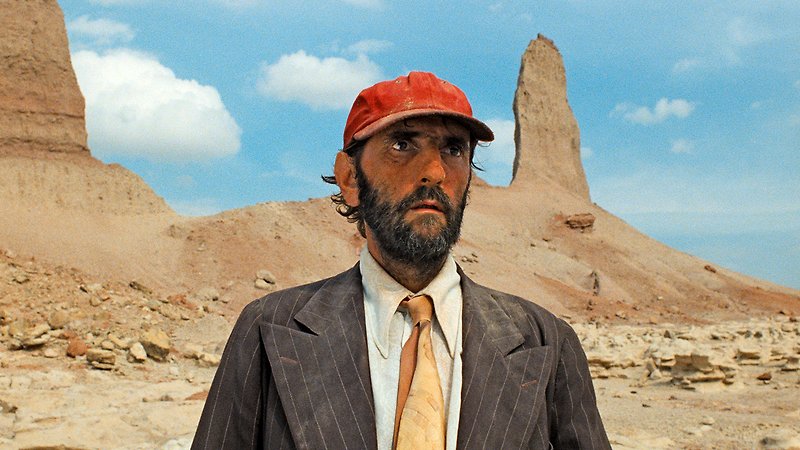Paris, Texas (1984)
Directed by Wim Wenders. Written by Sam Shepard and L.M. Kit Carson.

Paris, Texas is a deeply emotional road movie and character study that follows Travis Henderson (played by Harry Dean Stanton), a mysterious and silent drifter who reemerges from the desert after being missing for four years. Disoriented and physically worn, Travis is found wandering in the vast Texas wilderness and is eventually picked up by his brother, Walt (Dean Stockwell), who brings him back to Los Angeles.

As Travis slowly regains his voice and memory, we learn that he had abandoned his wife Jane (Nastassja Kinski) and their young son Hunter due to the emotional turmoil in their relationship. During his recovery, Travis reconnects with Hunter, now living with Walt and his wife. Their bond grows slowly and tenderly, culminating in a heartfelt journey to reunite the boy with his estranged mother.

Driven by guilt, longing, and a sense of redemption, Travis sets out with Hunter on a road trip to find Jane. The search leads them to Houston, where Jane works in a peep show behind a one-way mirror. In a hauntingly intimate scene, Travis speaks to Jane through the glass, pouring out years of regret and pain. Though he cannot fully re-enter their lives, Travis orchestrates a reunion between mother and son, then quietly slips away once more, believing it’s the only way to truly make amends.
The film is renowned for its minimalist dialogue, evocative cinematography by Robby Müller, and Ry Cooder’s haunting slide guitar score. The barren American landscapes, neon-lit urban backdrops, and subdued performances all amplify the emotional resonance of the story.
At its core, Paris, Texas is a meditation on memory, loss, and the human need for connection. It explores themes of identity, family, and redemption through a lens of poetic realism, capturing the fragile beauty of broken lives trying to mend. The film’s visual storytelling, emotional depth, and restrained performances have made it a timeless classic in world cinema.



